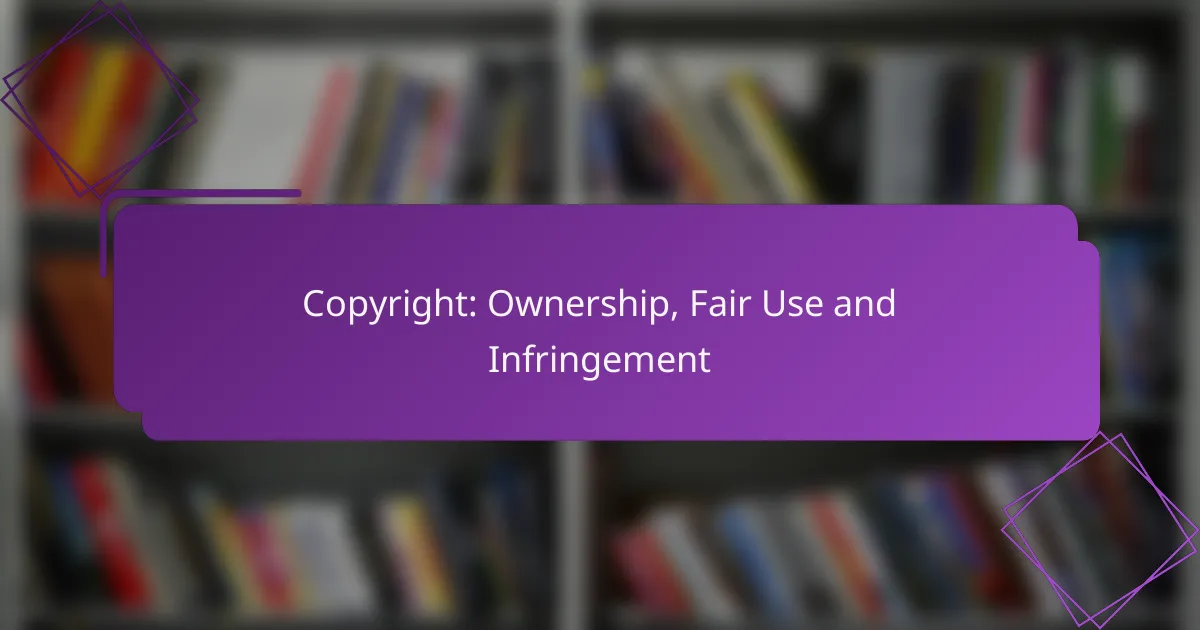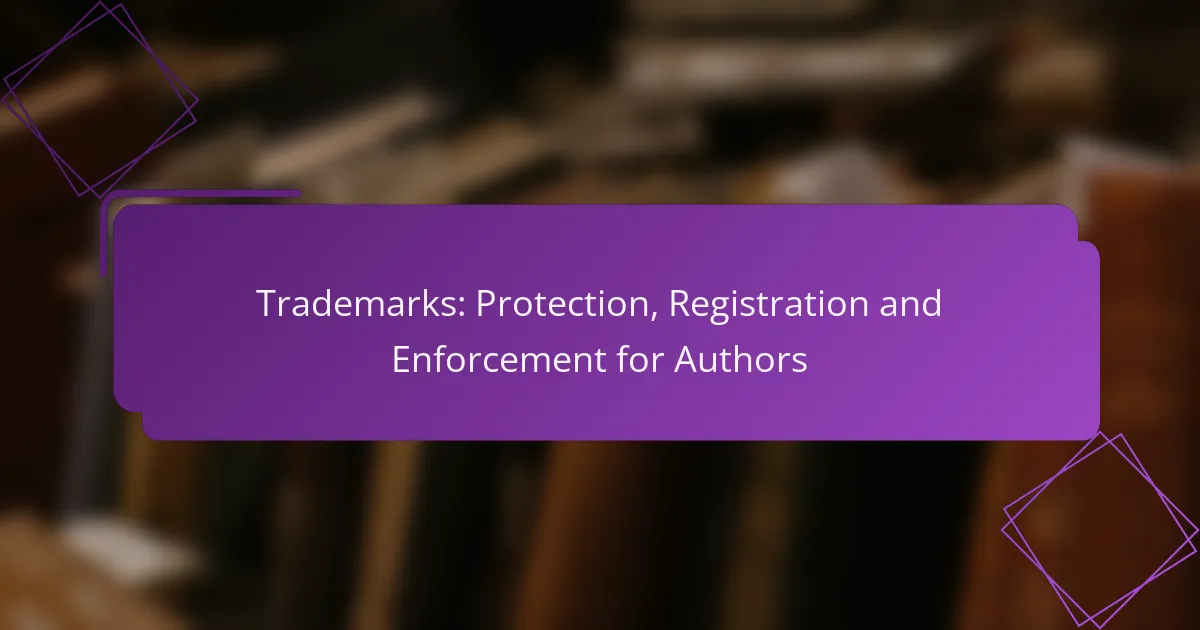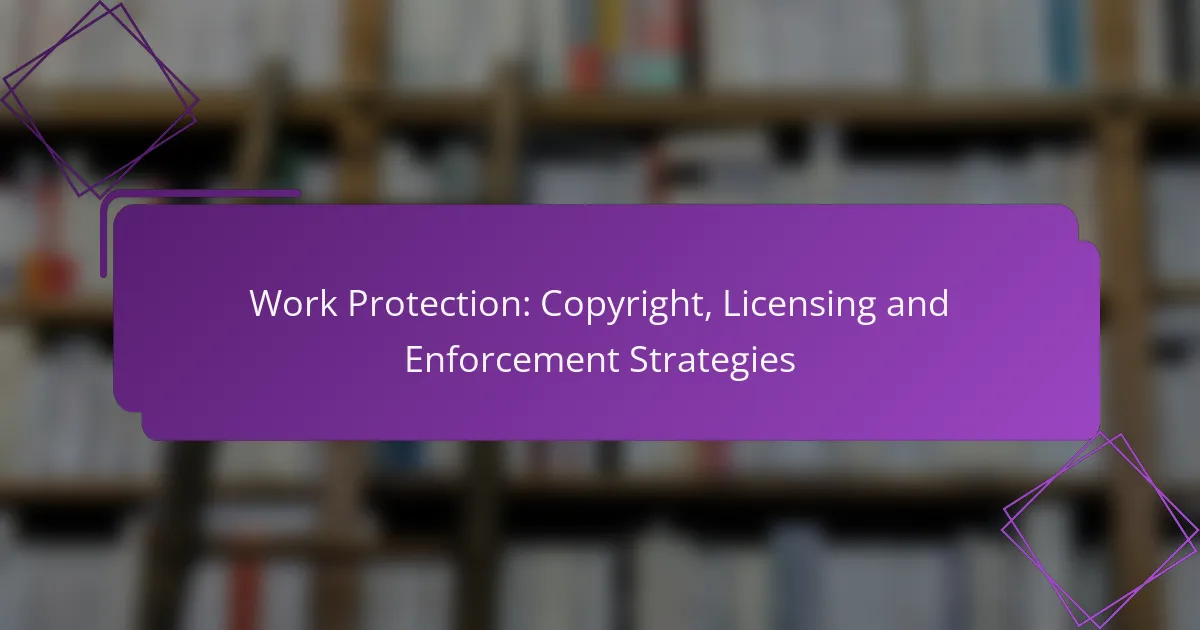Copyright law protects the rights of creators by granting ownership of original works fixed in a tangible medium, with automatic protection upon creation and additional benefits through registration. The doctrine of fair use allows for limited use of copyrighted material without permission, balancing the interests of creators and the public’s access to information. Infringement occurs when a copyrighted work is used without authorization, encompassing unauthorized reproduction, distribution, or display of various media types.

How to establish copyright ownership in the US?
To establish copyright ownership in the US, you must create an original work and fix it in a tangible medium. Copyright protection is automatic upon creation, but registration with the U.S. Copyright Office provides additional legal benefits.
Copyright registration process
The copyright registration process involves completing an application form, submitting a copy of your work, and paying a fee, typically ranging from $35 to $55. You can register online or via mail, with online registration being faster and more cost-effective.
Once submitted, the U.S. Copyright Office reviews your application, which can take several months. After approval, you will receive a certificate of registration, which serves as legal proof of your copyright ownership.
Benefits of registration
Registering your copyright offers several advantages, including the ability to sue for statutory damages and attorney fees in case of infringement. Without registration, you can only seek actual damages, which may be harder to prove.
Additionally, registration establishes a public record of your copyright, deterring potential infringers. It also allows you to file a lawsuit in federal court, providing broader legal protections.
Transfer of ownership
Copyright ownership can be transferred through a written agreement, known as an assignment. This document must clearly state the rights being transferred and should be signed by both parties to be legally binding.
When transferring ownership, it’s important to specify whether the transfer is exclusive or non-exclusive. An exclusive transfer grants the new owner all rights, while a non-exclusive transfer allows the original owner to retain some rights and license the work to others.
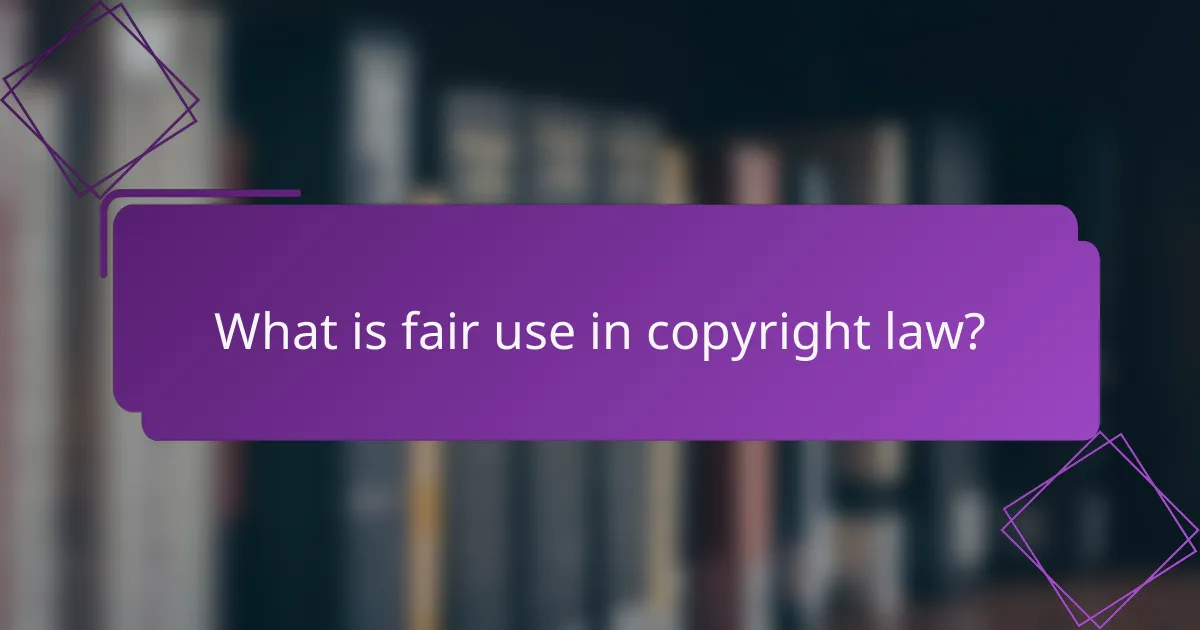
What is fair use in copyright law?
Fair use in copyright law allows limited use of copyrighted material without permission from the rights holder. It is a legal doctrine that balances the interests of creators with the public’s right to access information and culture.
Definition of fair use
Fair use is defined by four key factors: the purpose and character of the use, the nature of the copyrighted work, the amount and substantiality of the portion used, and the effect of the use on the market for the original work. These factors help determine whether a specific use qualifies as fair use, allowing for flexibility in interpretation.
Typically, uses that are educational, transformative, or non-commercial are more likely to be considered fair use. However, each case is judged individually, and no single factor is determinative.
Examples of fair use
Common examples of fair use include quoting a few lines from a book in a review, using a clip from a film for criticism or commentary, and incorporating images in a classroom setting for educational purposes. These instances demonstrate how fair use can facilitate discussion and learning.
However, caution is necessary. For instance, using an entire chapter from a book or a significant portion of a song may not qualify as fair use, especially if it negatively impacts the market value of the original work. Always consider the context and purpose of your use to assess its fair use eligibility.
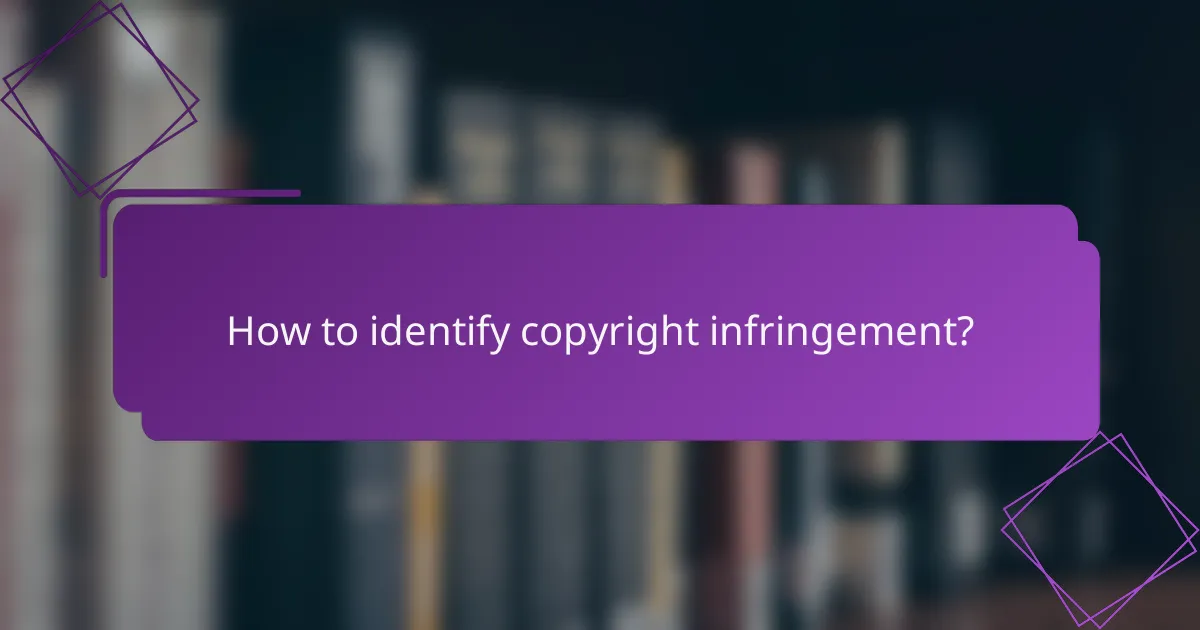
How to identify copyright infringement?
Copyright infringement occurs when someone uses a copyrighted work without permission from the owner. To identify infringement, look for unauthorized reproduction, distribution, or display of the work, which can include text, images, music, or videos.
Common signs of infringement
Common indicators of copyright infringement include the unauthorized use of copyrighted material in commercial products, online platforms, or public performances. If you see a work being sold or shared without proper licensing or attribution, it may be infringing on copyright.
Additionally, if the material appears to be a direct copy of the original work, or if it lacks any credit to the creator, these are strong signs of potential infringement. Familiarizing yourself with the original work can help in spotting these discrepancies.
Legal consequences of infringement
The legal consequences of copyright infringement can be severe, ranging from monetary damages to injunctions against further use. In some cases, statutory damages can amount to thousands of dollars, depending on the severity and willfulness of the infringement.
Infringers may also face legal action from the copyright holder, which can result in costly litigation and reputational harm. Understanding copyright laws and respecting creators’ rights is crucial to avoid these pitfalls and ensure compliance.
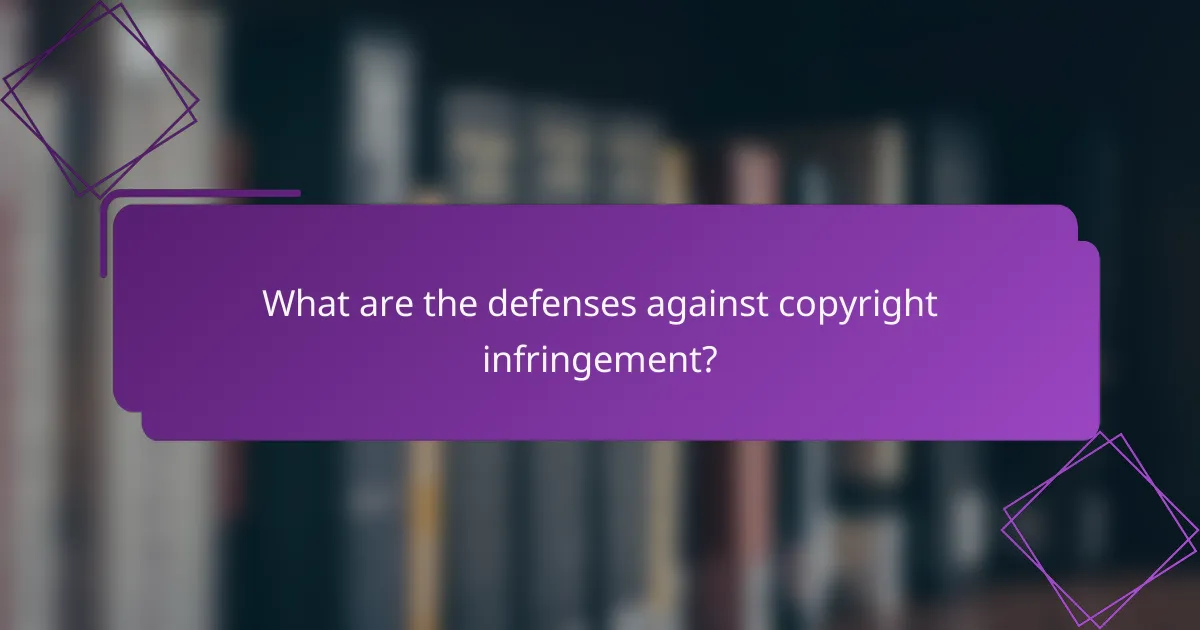
What are the defenses against copyright infringement?
Defenses against copyright infringement include legal arguments that can protect individuals or entities from liability. The most common defenses are fair use and the first sale doctrine, each with specific criteria and applications.
Fair use as a defense
Fair use allows limited use of copyrighted material without permission from the rights holder, primarily for purposes such as criticism, comment, news reporting, teaching, scholarship, or research. To determine if a use qualifies as fair, courts consider four factors: the purpose and character of the use, the nature of the copyrighted work, the amount used in relation to the whole, and the effect on the market for the original work.
For example, using a short clip from a movie for a review may be considered fair use, while reproducing an entire song for a public performance likely would not. It’s essential to assess these factors carefully, as fair use is determined on a case-by-case basis.
First sale doctrine
The first sale doctrine permits the resale or distribution of a legally acquired copyrighted work without the permission of the copyright owner. This means that once a copyright holder sells a copy of their work, they cannot control how that specific copy is used or sold again.
For instance, if you buy a book, you can sell it, give it away, or lend it without needing to seek permission from the author. However, this doctrine does not apply to digital goods in the same way, as many digital licenses restrict resale, making it crucial to understand the terms of use for digital products.
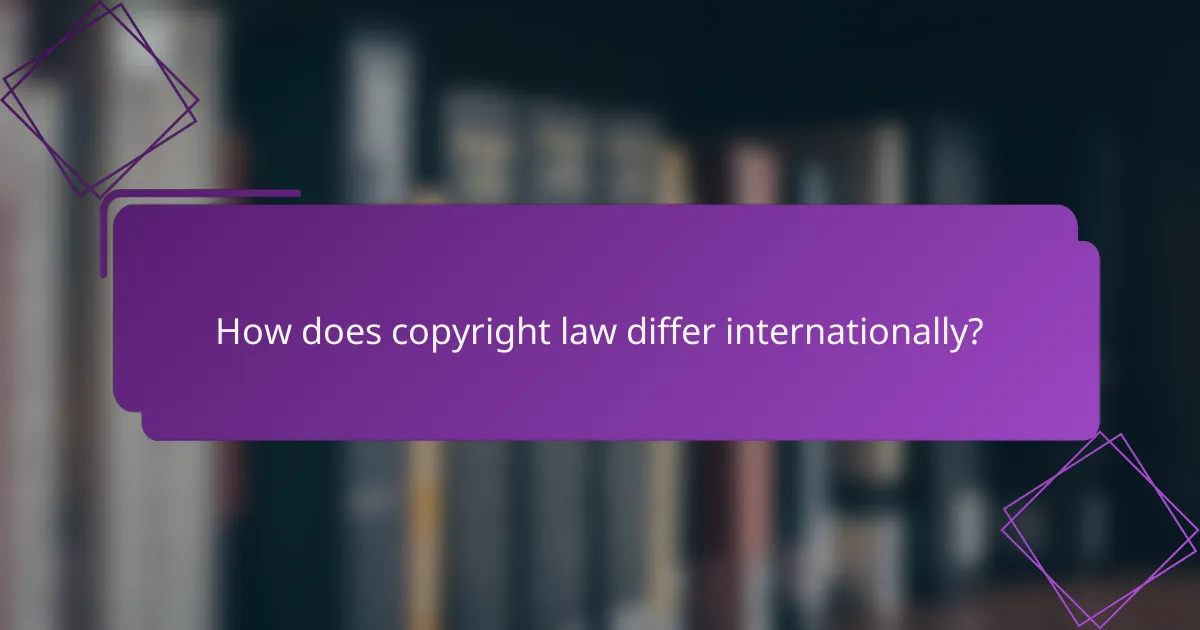
How does copyright law differ internationally?
Copyright law varies significantly across countries, impacting how works are protected and enforced. Key differences include the duration of protection, the scope of fair use, and the enforcement mechanisms available in different jurisdictions.
Key differences in EU copyright law
In the European Union, copyright law is harmonized to some extent through directives, but member states still have the flexibility to implement their own rules. For example, the duration of copyright protection is generally 70 years after the author’s death, similar to many other regions, but exceptions for educational use can vary widely.
The EU also emphasizes moral rights, which grant authors the right to object to derogatory treatment of their work. This contrasts with some countries, like the United States, where moral rights are limited. Understanding these nuances is crucial for creators operating in or with the EU.
International treaties affecting copyright
Several international treaties shape global copyright standards, with the Berne Convention and the Agreement on Trade-Related Aspects of Intellectual Property Rights (TRIPS) being the most significant. The Berne Convention mandates that member countries recognize copyright protection for works originating in other member states, ensuring a baseline level of protection.
TRIPS further strengthens copyright enforcement by requiring countries to adopt specific legal frameworks. However, compliance and enforcement can vary, leading to disparities in how copyright is upheld globally. Creators should be aware of these treaties when distributing their work internationally.
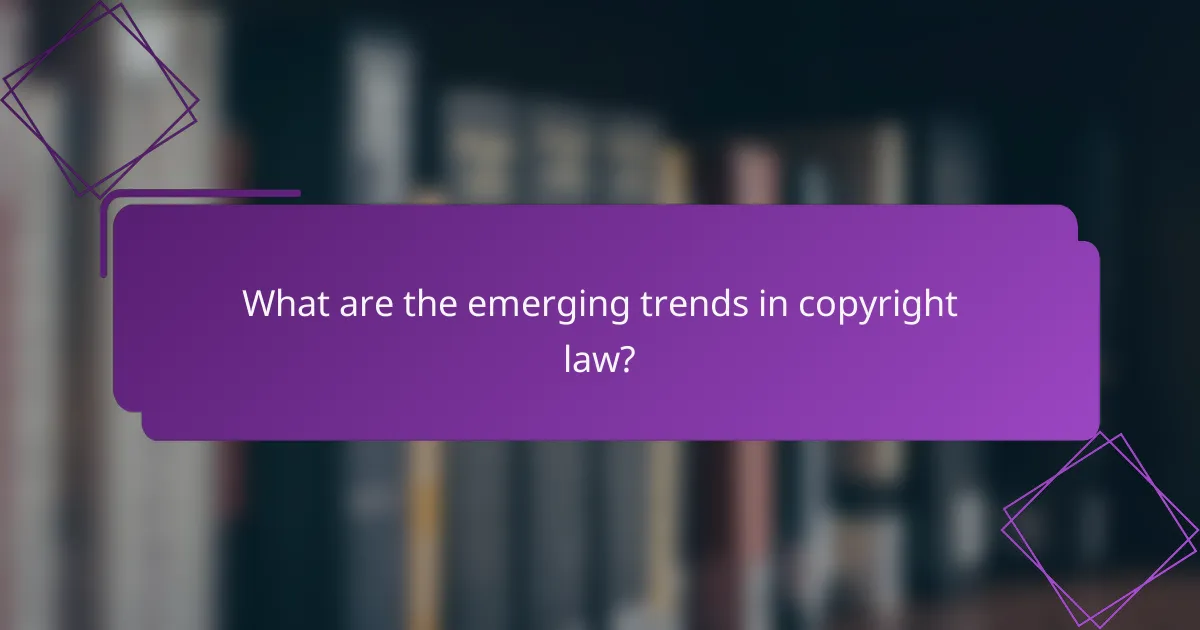
What are the emerging trends in copyright law?
Emerging trends in copyright law reflect the rapid evolution of technology and digital media. Key developments include the impact of digital platforms, changes in enforcement practices, and the implications of artificial intelligence on copyright ownership and usage.
Impact of digital media
The rise of digital media has transformed how content is created, shared, and consumed, leading to new challenges in copyright protection. Online platforms allow for easy distribution, but they also increase the risk of infringement as users can easily copy and share works without permission.
Content creators must navigate the complexities of licensing agreements and platform policies to protect their rights. For example, social media sites often have their own rules regarding user-generated content, which can affect ownership and compensation.
Changes in enforcement practices
Enforcement of copyright laws is evolving, with a growing emphasis on proactive measures rather than reactive ones. Rights holders are increasingly utilizing technology, such as automated content recognition systems, to monitor and enforce their copyrights online.
Additionally, there is a trend towards more collaborative approaches, where platforms and creators work together to address infringement issues. This can involve revenue-sharing agreements or content removal processes that prioritize fair use considerations.
Future of copyright in the AI era
The integration of artificial intelligence in content creation raises significant questions about copyright ownership and fair use. As AI systems generate original works, determining who holds the copyright—whether it’s the developer, the user, or the AI itself—remains a contentious issue.
Legal frameworks are likely to adapt to address these challenges, potentially leading to new regulations that clarify the rights associated with AI-generated content. Stakeholders should stay informed about these developments to protect their interests in an increasingly automated creative landscape.
